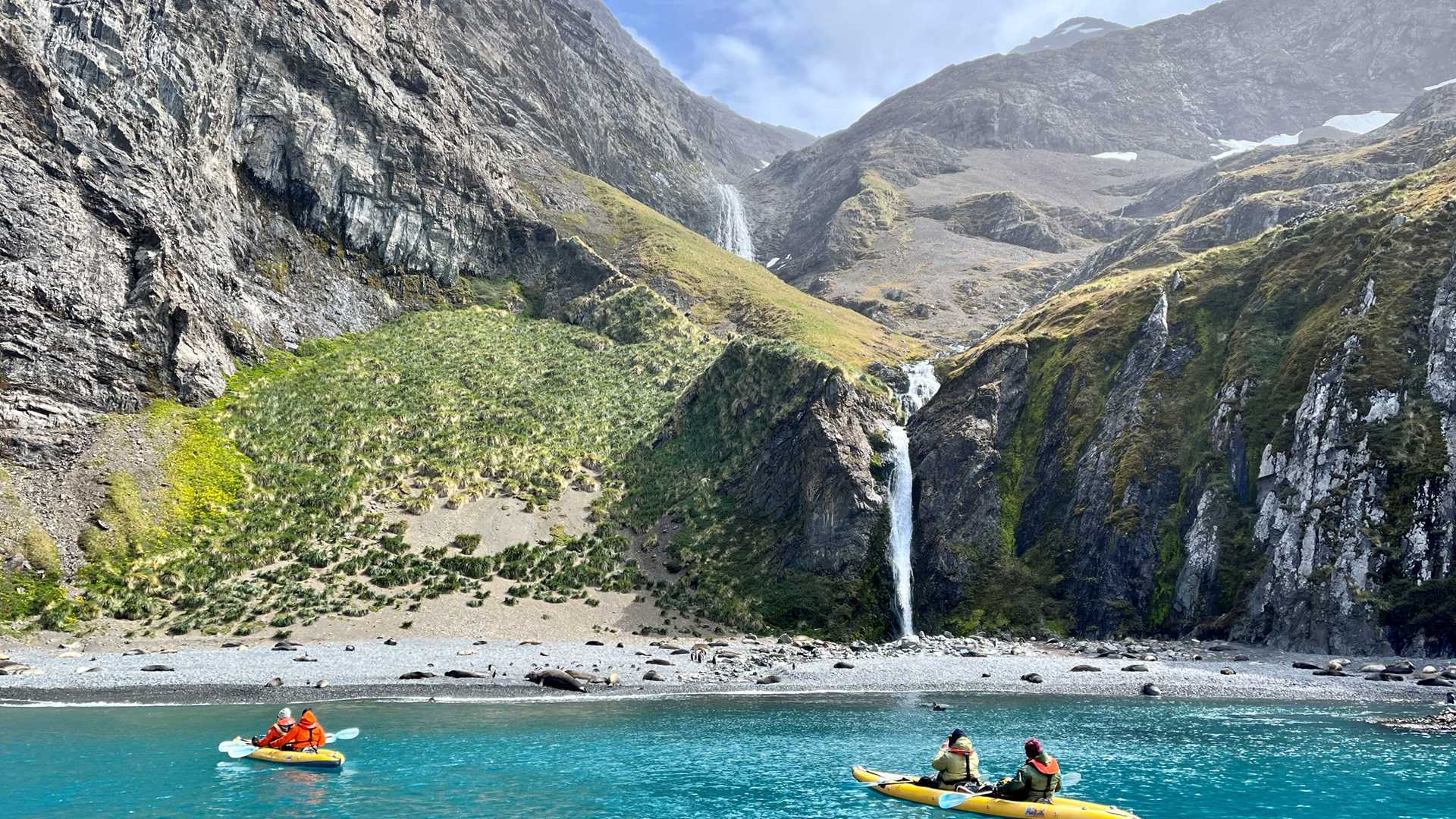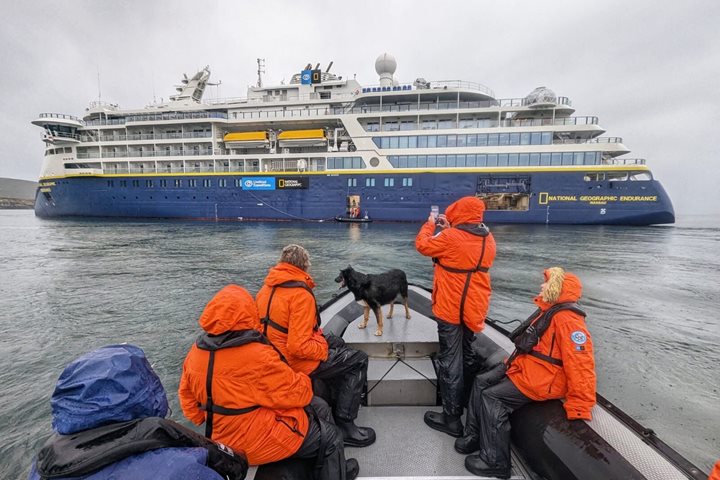Written by National Geographic Grosvenor Teacher Fellows: Katie Harnish, Lauren D’Ambrosio, and Susan Dorsey
Tracing back in time to when Shackleton and his men traversed from Fortuna Bay to Stromness, we followed nearly in their footsteps along a 4.5-mile (7 km) hike. The theme of the hike was layers, between the landscape and ourselves. Upon ascent we quickly stripped layers of clothing as we navigated to Crean Lake whose layers of rock were carved out by glacial paths, leaving behind a fresh water source for nesting terns.
This vantage point was where Shackleton and crew heard the whaling whistle and its namesake, Tom Crean, had fallen into the water. We continued up along another ridge passing stacked layers of rock that shone iridescently in the filtered sunlight. As we reached another crest, we saw what Shackleton and his men saw years ago, Stromness and the whaling station. This whaling station, which once stripped layers of blubber and meat off thousands of whales, was slowly being peeled back, as the wind stripped layers of rusted metal from the remaining structures.
We worked our way down the descent over ice banks and following the switchback path of rocks along a waterfall and next to a stream. We continued to weave our way closer to the shore avoiding “land mines” of fur seals guarding their territory. We met up with the medium and short distance hikers and layered our clothing back on as we boarded the Zodiacs for our next adventure.
With the weather a balmy 40 degrees Fahrenheit/4 degrees Celsius (no wind making water-like crystal blue glass), some spent the afternoon paddling kayaks beneath the magnificent cliffs of Hercules Bay as others took in the beauty of the area on Zodiacs. We drifted beside a towering waterfall that tumbled onto a gravelly beach where penguins strutted and fur seal bulls battled. We observed colonies of macaroni penguins as they hopped up and down the rocky cliffs. Coves revealed slumbering elephant seals, and we slid by long strands of giant sea kelp that bobbed just below the cerulean surface of the water. Even farther below, the dive team captured images of nudibranchs, limpets, sea angels, and sea butterflies, exposing a world beyond our vision. It was an incredibly peaceful and personal way to get safely close to these incredible animals and to witness the powerful beauty of South Georgia from the water. We are fortunate to enjoy this warmer than usual weather, but with it brings worry about our future as the climate changes.
Beautiful burnt umbers, oranges, and rusted reds in the decaying whaling equipment surrounded by Antarctic terns and their young, fur seals, elephant seals, and a king penguin strolling through town. Could this be a vision of hope? A mix of emotions as we watch the porpoising penguins and snow petrels. “South Georgia is like stepping into the past. The abundance of wildlife we’ve encountered here used to be all over the world,” naturalist David Cochran said during the evening recap. Imagining, dreaming, contemplating-what would that look like? Is that something we can get to again? How can we create spaces of abundance for wildlife and peoples? Can we decolonize? What if our daily lives and economies were rooted in something deeper? These are the questions that this day on South Georgia has asked us to consider.







